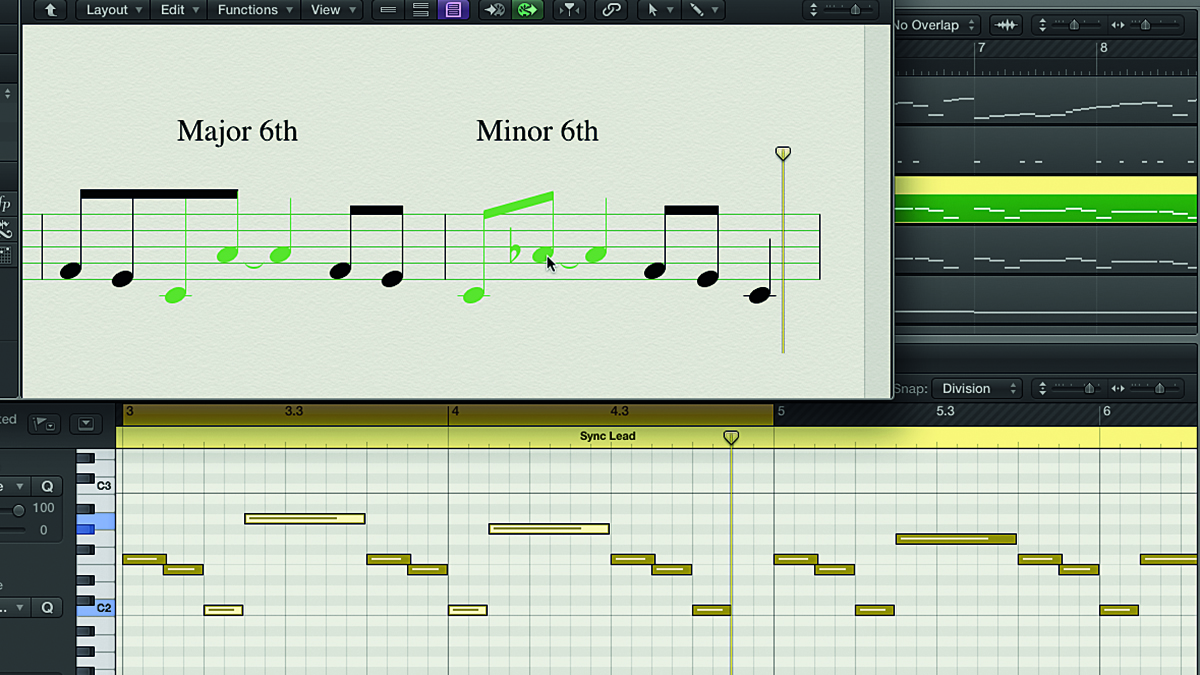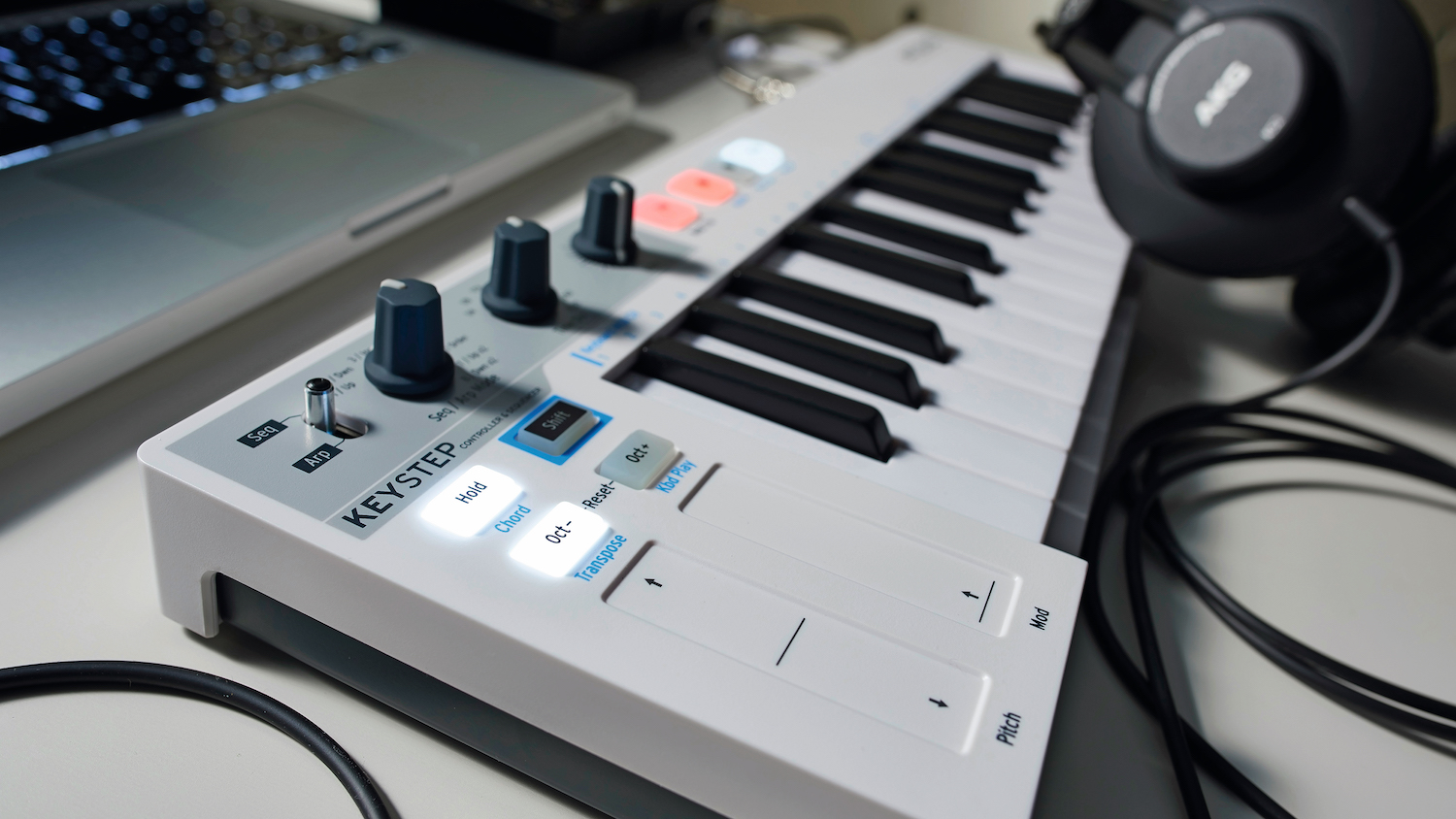10 music theory tricks every producer and songwriter should know
Spruce up your chords and snazz up those scales with our simple but powerful techniques

Music theory has always had a slight whiff of the uncool about it, conjuring up images of dry, dusty, bewigged baroque musicians from centuries past, the nightmare of childhood piano lessons, or baffling overheard discussions in jazz clubs concerning the superiority of augmented 13ths over Neapolitan sixths or the joys of soloing in the Mixolydian mode.
This bad rep is entirely unjustified, however, since regardless of whether you're a composer, songwriter, producer or DJ, shoring up your musical knowledge with a smattering of grassroots theory can have a profound effect on the quality of your output.
Here at MusicRadar, we never underestimate the importance of a good grounding in music theory. After all, how music actually works is the key to everything we do when we're creating a project. The idea is to think of theory as a framework to support and inspire your musical endeavours, rather than inhibit and rule them.
The best part is that you don't have to plumb the murky depths of the subject to be able to use it to your advantage. When a crippling loss of creativity strikes when you're sitting in front of your DAW - and this can happen to any of us at any time, let's face it - having a few tried, tested and theoretically proven techniques in your back pocket can be a lifesaver.
Here, we're going to highlight ten of our favourite, most practical theory-based tips that can help to kickstart the creative process next time your inspiration well runs a little dry. Time to knuckle down and get theory-ous!
• Best online piano lessons: recommended piano lesson apps, software and websites
1. Broken chords
Should your keyboard parts naturally tend towards the clunky side, things can be improved by employing a technique known as broken chords. This involves breaking chords up into their component notes and playing them as short arpeggios (runs of notes). The technique doesn’t just add rhythmic interest, but it can be a great way of coming up with ideas for cool melodies that work naturally with the chord progression, since the notes you pick out are taken from the chords themselves.
Want all the hottest music and gear news, reviews, deals, features and more, direct to your inbox? Sign up here.
Here we have a four-bar progression of simple block chords. To the right, we have the same progression, but played using broken chords. Like finger-picking on an acoustic guitar, instead of playing all the notes on the same beat, each triad is split into individual notes.
2. Animating chords with inversions
Moving the order of notes around within a chord can take a progression in new directions without changing the actual chords. This is easily done by selecting notes and shifting them up and down an octave - most DAWs have a shortcut key for this, such as Shift-Up/Down.
Here we’ve taken a simple C, D, Eb, F progression and completely altered its shape by swapping the note order around in the second half. These ‘rearranged’ chords are known as inversions.
3. Change the bass note
The notes a bass part plays can assume the role of root note for the chords played by parts above it. Sticking different bass notes underneath can radically alter the sound of a static chord sequence.
Step 1: Let’s illustrate by looking at a piano part playing a repeated rhythmic C minor chord sequence over and over… and over. It sounds pretty boring, as the chord doesn’t change. Instead of thinking up new chords, though, let’s try injecting freshness by using a more animated bass part.
Step 2: For the first two bars, we stick to a C bass note, as it’s the root note of the chord. After two bars, however, we shift the bass note down from C to A, forming a completely different chord with the piano - an Am7b5 (A-Eb-G-C), in fact.
Step 3: Keeping the piano chord the same, we next move the bass from A to Ab, making an Abmaj7 (Ab-Eb-G-C) chord. Then down to F, up to G and back to C again. If you’re not sure what bass notes will fit, try picking notes that are already in the accompanying chord(s).
4. New flavours with modes
If you’ve never encountered modes before, this one tip could change your musical outlook forever. Scales are a basic component of music theory - most people know one or two of the major scales, the most common being C major (C D E F G A B). But what if we told you that you could unlock a secret world of evocative alternative scales simply by playing any scale from a different starting note?
Try it by playing C major in the conventional fashion, from C to C on a MIDI keyboard. Now give your ears a few seconds’ rest to forget the sound of it, and play the same scale again, but without starting on C. Try going from D to D. Or F to F. Notice how they have a different quality to the major’s happy, kindergarten sound? What you’re playing are different modes of the C major scale, and they sound different because of the different sequence of intervals between the notes that happens when you start somewhere other than the root note of the scale. Underpinning each new mode with a bass note the same as your new starting note will reinforce the effect.
5. Monotony rules
Melody-writing can be tough, but sometimes, if the rhythm is hooky enough, sticking religiously to one note is all you need to do.
Try using a monotone melody in a verse part, and slowly add small variations through the bridge section to build to a chorus hook. This approach also gives you an opportunity to focus on rhythm and sonic variety, rather than just melody alone, for adding interest.
6. Borrowed chords
Diatonic means “in key”, and diatonic chords are formed using only notes taken from a particular scale. So a C major scale containing the notes C D E F G A B - the white notes on a keyboard - would give you the diatonic chords C, Dm, Em, F, G, Am, and Bdim, formed by stacking alternate notes onto each note within the scale. These are the basic triads you may already be familiar with; however, a palette of only seven chords can be limiting, so why not borrow chords from other keys?
Borrowed chords are most often taken from parallel keys - keys that have the same root note as the original key. In the case of C major, the parallel minor key is C minor, so we have a whole new set of chords to choose from - Cm, Ddim, Eb, Fm, Gm, Ab and Bb.
7. Layer chords together
For an exotic sound, try combining regular major or minor triads together to form polychords.
For a classic polychord combo, let’s use C major as the first chord (C-E-G). For the second, we need to find the major chord that has its root a perfect fifth above the root of the first chord. In this case, that happens to be G major (G-B-D). Play the two chords together and you get a Cmaj9 chord (C-E-G-B-D). If you’re stuck for which chords to combine, go for ones that already have a note or two in common.
8. Take some giant leaps
To give things a kick when putting together a melody, try making a dramatic leap up the keyboard. A good interval to use for this is a minor or major sixth.
You find these intervals by using the scale degree numbering system outlined in Tip 10. With major scales, the distance between the root note and degree 6 of the scale is a major sixth, so in the case of C, a major sixth above would be A. Jump up from C to A in the course of a melody, and it’ll take you up into a whole different area of the keyboard.
9. Build an extension
Extending regular major or minor triads by adding extra notes can radically transform a track. For instance, in C major, a Cmaj7 is made by adding the seventh degree of the C major scale (B) to a C major triad (C-E-G).
If we extend the scale up the keyboard beyond the octave, we get into the extended range, where a ninth is essentially the scale’s second degree played up an octave. So an easy way to play a ninth chord is to play a root-position triad (for example, C major – C-E-G) and add in the second degree between the root and the third (C9 – C-D-E-G).
10. Go pentatonic
Limiting yourself to notes from a pentatonic scale may give you a smaller choice, but it can give rise to some memorable melodies.
Step 1: While a conventional major or minor scale contains seven notes, a pentatonic scale only contains five. Effectively, they’re regular scales with a couple of notes removed. If we look at a normal C major scale, we can see that it contains the notes C, D, E, F, G, A and B.
Step 2: We can then give these degrees numbers, from 1 to 7. To make the scale pentatonic, we need to remove degrees 4 and 7 - in this case, that’s F and B, leaving us with C, D, E, G and A, the C major pentatonic scale.
Step 3: For a minor pentatonic scale, omit the second (D) and sixth (Ab) degrees. For the C minor scale, we’re left with C, Eb, F, G and Bb. Pentatonic scales sound great, and they’re fun and easy to use.
Computer Music magazine is the world’s best selling publication dedicated solely to making great music with your Mac or PC computer. Each issue it brings its lucky readers the best in cutting-edge tutorials, need-to-know, expert software reviews and even all the tools you actually need to make great music today, courtesy of our legendary CM Plugin Suite.

